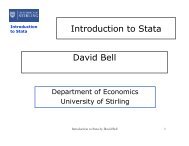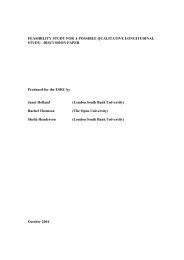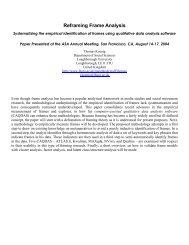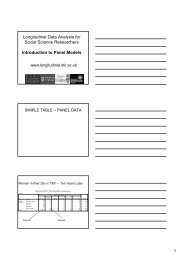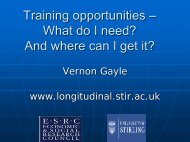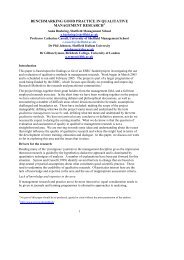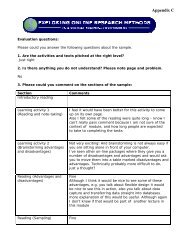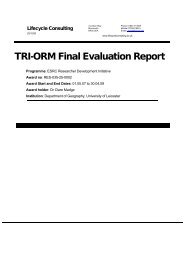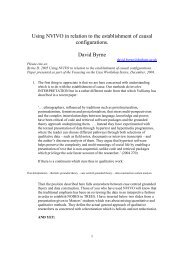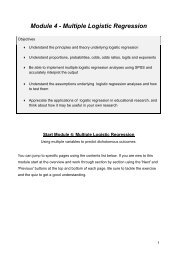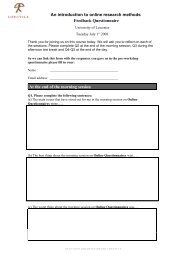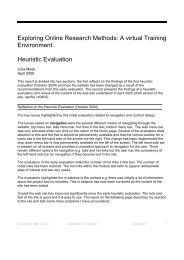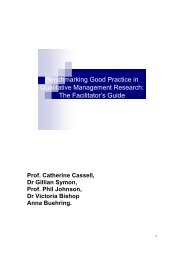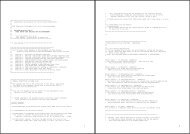You also want an ePaper? Increase the reach of your titles
YUMPU automatically turns print PDFs into web optimized ePapers that Google loves.
Thomas Koenig: Framing Anti-Semitism as Free Speech 18<br />
Discussion<br />
This paper shows the potentialities of the use of CAQDAS in combination with latent class<br />
analysis to elaborate and to some extent validate frames that are suspected to underlie textual<br />
data. It shows that with the help of interpretatively identified keywords, frames can be<br />
detected fairly swiftly throughout a large body of data. It also shows that further analysis of<br />
the frames can reveal patterns of their usage.<br />
Several problems should be noted: First of all, with very few exceptions, keywords do not<br />
distinguish between a frame and its counter frame. The third cluster shows this very well:<br />
Both vocal anti-Semites and those who debunk them use, of course, the same words for their<br />
arguments, as the latter quote the most openly anti-Semitic speech figures in their effort to<br />
debunk anti-Semitism. A distinction between these frames would require considerable effort,<br />
as each keyword would need to be inspected for its direction by a coder. Even in our<br />
relatively small sample, these exceed 9,000 codes.<br />
Second, like any quantitative analysis, such analysis relies on the selection of appropriate<br />
keywords, thus introduces researcher fiat to some extent. If the analyst does not select the<br />
appropriate most frequent keywords, frequency counts have little or no meaning.<br />
Third, there is a problem with respect to very small texts, which may not contain any of<br />
the keywords, and very large texts, which may contain keywords from all groups. We<br />
circumvented these problems to some extent by filtering those texts, which did not contain<br />
more than one keyword, and by the fact that all but five texts contained less than 10,000<br />
characters. If larger texts are used, one would probably have to use frequency counts instead<br />
of binary absence/presence variables for codes, which would introduce further tenuous<br />
assumptions. 20<br />
Finally, no coding can adequately capture the importance text passages, which might carry<br />
more significance than the remainder of the text (Kracauer 1952). If such passages surface in<br />
the sample, a separate interpretative analysis would be called for.<br />
On the substantial level, our analysis reveals two things: For one, only a small minority of<br />
framings drew on the classical anti-Semitism versus anti-Fascism conflict. A larger minority<br />
of postings was solely concerned with the conflict between elites and the common citizenry.<br />
These frames were not effectively rebutted, as the main frame for Hohmann opponents<br />
targets the anti-Semitism/anti-fascism conflict line, while Hohmann supporters ignored this<br />
20 We did perform all analysis also using frequency counts; the substantial results remained the same.



